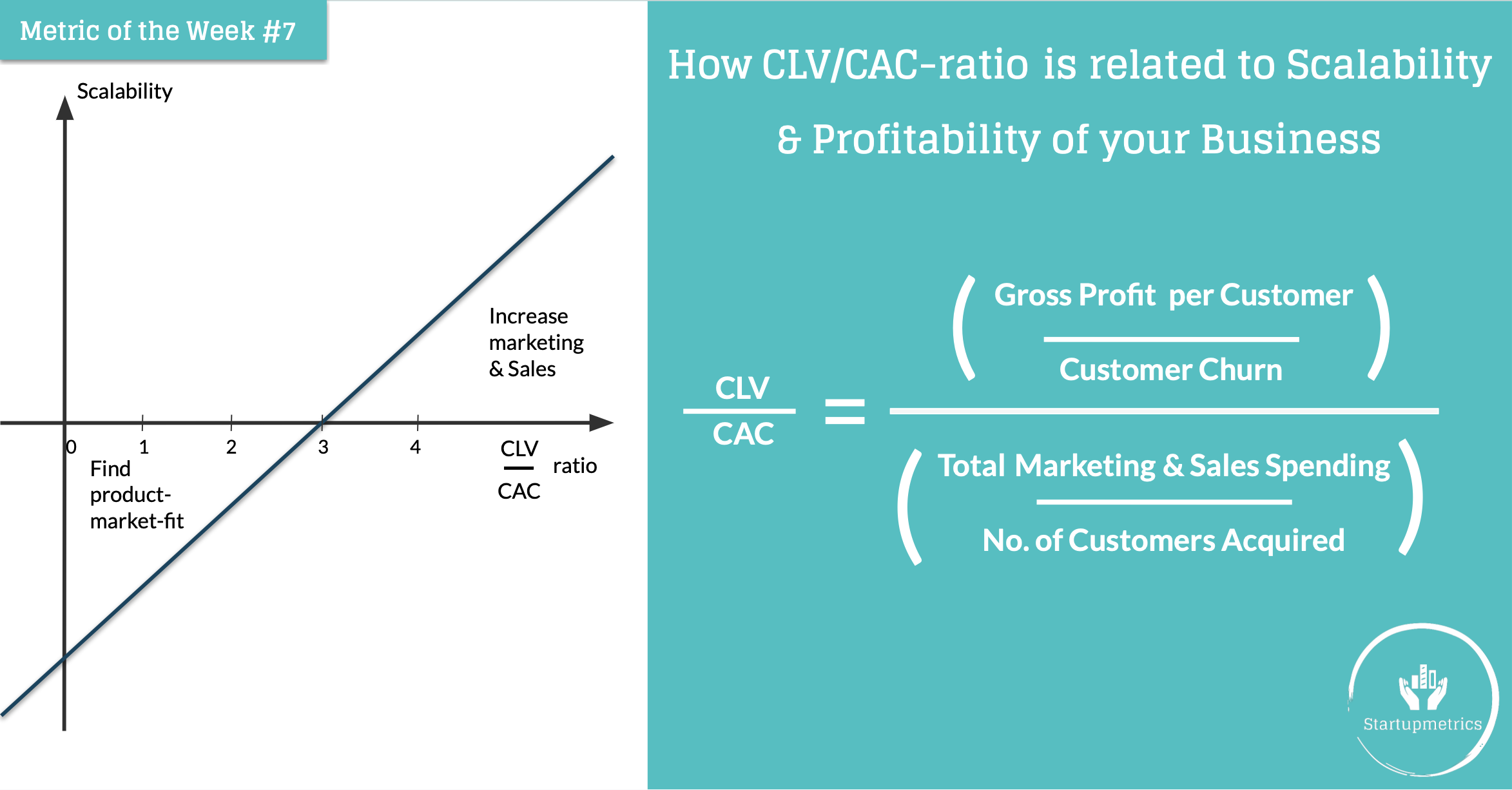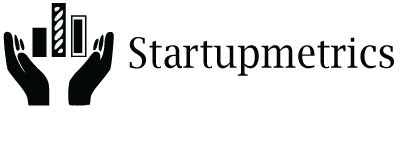How customer lifetime value to customer acquisition costs (CLV/CAC) ratio is related to scalability and profitability
The customer lifetime value to customer acquisition cost (CLV/CAC) ratio is a good metric to measure the scalability and profitability of your business.
The formula to calculate the CLV to CAC ratio is,
(gross profit per customer / customer churn) / (Total Marketing & Sales Spending / No. of Customers Acquired)
Let’s look at an example of how the formula works: A startup spends $10,000 on a Google AdWords campaign and acquires 1,000 new customers. The average revenue per customer is $50, and the direct cost of filling each order is $30. The company retains 75% of its customers per year.
Gross profit per customer = $50 – $30 = $20
CLV = $20 / (1 – 75%) = $80
CAC = $10,000 / 1,000 = $10
CLV/CAC ratio = $80 / $10 = 8.0x
In this case, the ratio is quite high and the company is profitably acquiring customers – assuming there are not a huge amount of fixed costs in the business.
A good benchmark for CLV to CAC ratio is 3:1 or better. Generally, 4:1 or higher indicates a great business model. If your ratio is 5:1 or higher, you could be growing faster and are likely under-investing in marketing.
The main drivers of your ratio are as follows and should be observed to find optimization potential,
-
Customer Profile: Find an ideal customer profile.
-
Channels: Focus on the right channels
-
Pricing: Experiment with pricing
-
Sales Funnel: Reduce sales complexity and find ways to upsell, cross-sell, and upcharge
-
Customer relationship: Determine your top consumers’ lifetime habits by segmenting different customer bases in order to keep them as customers for a longer time.
-
Customer Feedback: Constant feedback provides you the information to enhance your product and reduce customer churn.
-
Payment Flexibility: Consider giving customers more options for subscriptions and memberships
-
Customer Engagement: Increase customer engagement and keep an eye out for changes in usage and frequency that may result in more profit for you.
The above mentioned drivers can be used to extract relevant information for optimising your customer lifetime value to customer acquisition costs ratio. As shown in the graphic, if your ratio is less than three, you should focus on making your product more scalable; if it is greater than three, your business is scalable, and you should consider spending more on marketing and sales to gain more customers.

